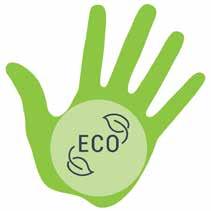
3 minute read
Manage the resource for a capable ecology
South Africa is known for its rich diversity of aquatic ecosystems. Unfortunately, most of our high-value aquatic ecological assets are poorly protected, as is evident by reports on deteriorating river systems, tributaries and wetlands. Chris Swartz from the WISA 2020 Technical Committee unpacks the ‘manage the resource for a capable ecology’ theme.
Why is it important to protect our aquatic ecosystems? CS South Africa’s diverse aquatic ecosystems include freshwater ecoregions, rivers, wetlands and estuaries. Ecologically sustainable water management protects the ecological integrity of ecosystems, while meeting intergenerational human needs for water and sustaining the full array of other products and services provided by natural freshwater ecosystems.
Advertisement
Freshwater ecosystems, and the species within them, can improve the quantity and quality of water available. This makes healthy rivers and wetlands vital to water security. Not only do plants and microorganisms help to clean and filter pollution from the water, they also play a crucial role in buffering communities through drought periods and long-term climate variation.
What is the current state of South Africa’s aquatic ecosystems? Unfortunately, monitoring programmes are faced with severe challenges – particularly, a lack of capacity and financial constraints. However, SANBI’s 2018 National Biodiversity Assessment shows that rivers and wetlands are among the most threatened ecosystems in South Africa and are currently in poor ecological condition.
South Africa has lost approximately 50% of its original wetland area and only around 300 000 wetlands remain, making up just 2.4% of South Africa’s area. Over 70% of our wetland ecosystem types have no protection. Similarly, the Department of Water and Sanitation’s River Eco Status Monitoring Programme State of Rivers Report 20172018, found that only 15% of South Africa’s rivers are in good condition.
Poor sanitation is one of the largest contributors to the deterioration of water resources. Formal and informal developments, mining and farming have caused severe deterioration of riparian zones and in-stream habitats. Other threats to our freshwater ecosystems include over-extraction, pollution from wastewater treatment works, agriculture and stormwater (nutrients, plastics and toxins), invasive alien species, habitat loss and degradation, and climate change. In the case of estuaries, over-fishing represents an additional serious pressure.
What are the dangers associated with deteriorating river systems and wetlands? The continued discharge of untreated or insufficiently treated effluent from wastewater treatment plants into our surface water resources is causing irreversible damage to the aquatic ecosystem and to humans. These pollutants decrease the supply of useable water, increase the cost of purifying it, contaminate aquatic resources, and affect food supplies.
Many people in developing countries, South Africa included, rely on untreated surface water as their basic source of domestic water supply – a major concern considering surface water is increasingly under stress and often unsafe for consumption.
Furthermore, wetlands are among the most productive ecosystems in the world. They play an important role by contributing to flood control, drought relief, water storage, sediment and nutrient retention and export, soil protection, water purification, erosion control, sustained stream flow, food security, fish nurseries, groundwater recharge, biodiversity, cultural value, recreation and tourism, as well as climate change mitigation and adaptation. As our wetlands continue to decline, they fail to fulfil these important functions.
The target for SDG 6.3 is to, “by 2030, improve water quality by reducing pollution, eliminating dumping and minimising release of hazardous chemicals and materials, halving the proportion of untreated wastewater and substantially increasing recycling and safe reuse globally.”
We need #AllHandsOnDeck to address strategies, programmes, and the capacity to restore our hard-working ecosystems to sustain and harness their value in the water value chain.





